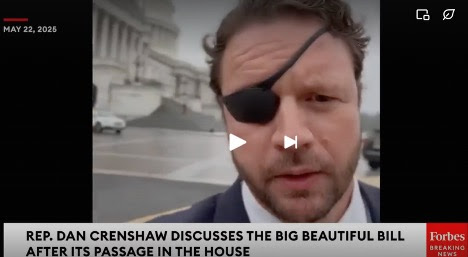We vote based on realistic choices, not what we wish were true. Of course, I wish that Ronald Reagan was resurrected, and we had 60 votes in the Senate. Then we could enact massive reforms that truly put our spending on a reasonable path. But this isn’t the reality we have now. The reality we have is a slim House majority while radical Democrats have the Senate and White House. Our leverage is limited.
But even with that limited leverage, we forced Biden to give up on every single demand he had. He first wanted a clean debt ceiling increase without reforms. We said no. He then wanted tax increases. We said no. He wanted cuts to our military. We said no. In the final bill, Biden got nothing, and we got about half of what we wanted. Of course we wanted more, but again, our leverage was limited.
Here are other facts to consider. Whether you like it or not, there has to be a debt ceiling increase. The economic consequences are catastrophic if you let the government default on its debt. Your 401k would crash as markets crash, the cost of borrowing would increase and make our debt worse, and recession would be imminent. Only third-world countries have allowed this to happen.
Some might say, “well if we cut spending, we wouldn’t have to increase the debt!” But this isn’t really true, not unless you’re fine with abolishing our Social Security and Medicare programs for our seniors, which account for nearly TWO-THIRDS of all spending. Yes, you read that right. Nearly TWO THIRDS. That means during these negotiations we are only arguing over 11% of all spending. Why? Because no one wants to touch Social Security, Medicare, Veterans benefits, or the military. That leaves all the other government agencies and programs which only account for 11% of spending. So, even if you abolished the entire federal government apart from the military, you WOULD STILL HAVE TO INCREASE THE DEBT LIMIT!
So, given that there is no choice but to increase the debt ceiling, and given we only have control of the House, where does that leave us? With what options? The options are clear. They are (1) a Biden-preferred clean debt ceiling increase with no reforms, (2) a default and say goodbye to your 401k, or (3) a debt ceiling increase with all the reforms we got.
Anyone claiming there is another option is being EXTREMELY dishonest with you.
So what reforms did we get? About $1.5 TRILLION dollar decrease in spending over 10 years. Not bad. Environmental permitting reform which is HUGE for our energy sector. This means Biden can’t wait 10 years to allow a permit for a new highway lane or gas pipeline. We finally forced the reforms we’ve been trying to do for YEARS. Billions of dollars in investment and jobs for Texas will be unleashed because of this. We also got some additional work requirements on Food Stamp programs and required some spending limitations (called “pay as you go” requirements) on any administrative action taken by the Biden Administration. We also cut all funding for new IRS agents this year.
There’s more, but those are the basics. The complaints from other Republicans aren’t about what’s in the bill, they’re about what’s not in the bill. But this is faulty logic. I can ALWAYS vote against something because it doesn’t have something I want. And it’s true, I can come up with a MILLION things this bill doesn’t have. No, it doesn’t fix our border, nor does it cure cancer, nor does it give me a new eye. But these are ridiculous excuses not to vote for a bill. Some Republicans will nitpick each of those wins and say they’re not enough. Well, I agree! They’re not enough! But that’s not that question. The QUESTION is (1) was this the best we could get? And (2) is it better than the alternatives, which is a clean debt ceiling increase or a default? The answers to both questions are very clearly YES.
Many Members of Congress are afraid to take tough votes even when they know it’s the right thing to do. I’m not. Never have been. I could EASILY have taken the easy way out and voted “no,” and kept my voters in the dark about the truth. No one would write to me to complain about a “no” vote. But I won’t do that. I can’t help but tell you the truth. And the truth is that this bill was the best case scenario given the political reality we live in. There is no evidence from anyone that we could have negotiated a better outcome. None. Therefore, I had to vote yes.












